We study the structure of corn from A to Z: what parts the vegetable consists of and where each part is applied
Corn is a well-known and widespread plant cultivated by humans. In the food industry, it is valued for its excellent taste, in medicine - for its rich chemical composition, in personal plots - for the original look of some decorative varieties. In the article we will tell you more about its features and methods of application.
The content of the article
The structure of corn
Although corn is a genus of plants in the Bluegrass family, including 6 species, only one of them is cultivated - sweet corn, or maize... The structure of the cereal differs from the "congeners": it is much higher, the stem is incomplete inside and does not look like the usual "straw".
Plant
Corn is a tall herb with long leaves, a powerful fibrous root system that penetrates the ground to a depth of 1–1.5 m. Additional small and aerial roots are placed on the stem above the ground and have a dual function: they protect the plant from falling and provide it with additional nutrition.

The height of an incomplete stem is usually 2-3 m, sometimes it reaches 4 m, the girth is up to 7 cm.
Large leaves grow up to 1 m long and up to 10 cm wide. The edges of the leaves are sharp: careless handling will lead to long and deep cuts on the body.
At the top of the stem is a male flower - a panicle. The female - the cob - is located in the axils of the leaves and has a dense sheet wrapper.
1-2 ears are usually formed on the stem, but some varieties have more than three.
Ear
Ear has an elongated shape, its length is 4-50 cm, diameter is 2-10 cm, weight is 30-500 g.

In the middle is a hard, thick, fleshy shaft, popularly called "stump", on which grains pressed against each other are placed in dense straight rows. The ear is wrapped in soft leaves, from which a long bundle of stigmas comes out.
Seeds
Corn seeds - kernels - large enough in size, round or cubic in shape, usually bright yellow in color, but there are red, blue, purple and even black shades.
The number of grains in each ear is 500-1000.
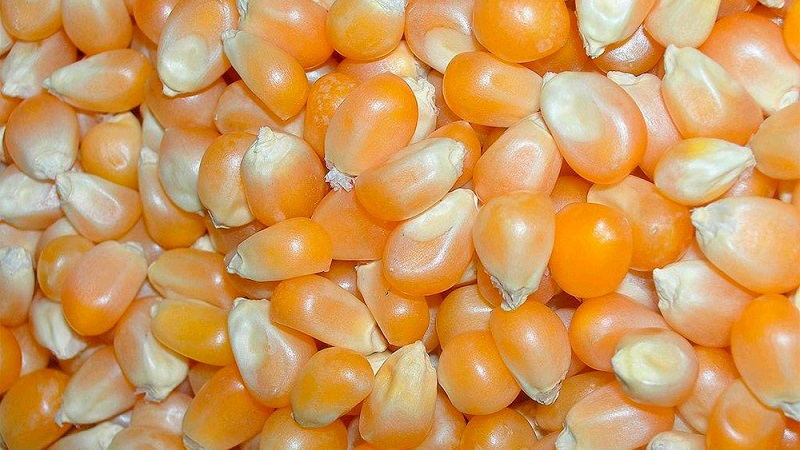
The shape of the caryopses depends on the plant variety.: some look like a tooth, others like a ball.
Interesting. There are seeds whose flattened top gives them the shape of an almost regular cube.
Description and characteristics
In addition to sweet corn, the genus includes 4 species and 3 wild-growing subspecies of cereals.
General information
Sugar corn - tall annual herbaceous crop.
The ripening period of the cereal depends on the variety and ranges from 90 to 150 days, while the seedlings emerge as early as 10–12 days.
This is a heat-loving culture, the optimum temperature for growth and development of which is + 20 ... + 24 ° C... Saplings can withstand temperatures as low as -3 ° C, and mature plants die even with a slight frost.
A bit of history
It is believed that corn appeared about 7-12 thousand years ago in Mexico as a result of selection one of the subspecies of wild cereals. There is evidence that more than 5 thousand years ago, American Indians already knew how to cook popcorn. To do this, they heated the grains in hot sand near the fire, and when they heated up, burst and flew out, the Indians caught and ate them.
Corn was brought to Europe by the expedition of Christopher Columbus and for a long time was used as an ornamental plant.
The so-called "Turkish wheat" came to Russia during the Russian-Turkish war of 1768–1774, and almost immediately began to be used as a food and fodder crop.
By the way. The US, Brazil and China hold the lead in growing cereals. Large quantities of corn are produced in Mexico, Argentina, India, South Africa, France and Russia.
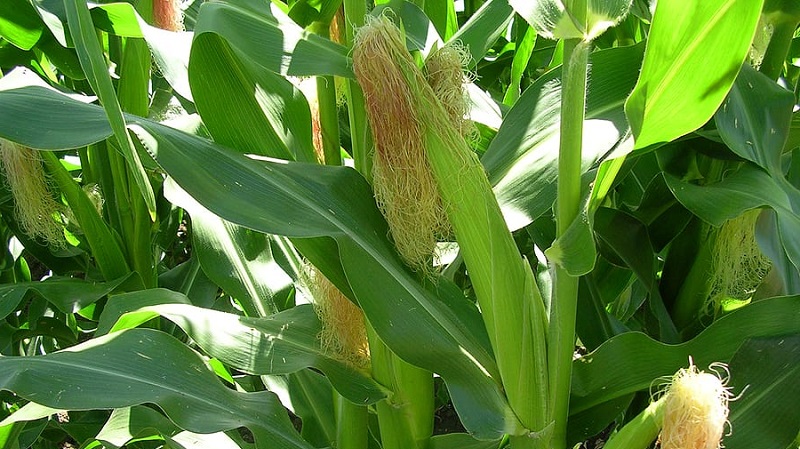
Varieties
There are 10 subspecies of corn (Zea mays):
- sugar (saccharata) - the most common, mainly used in the food industry: boiled or canned;
- siliceous (imdurata) - early ripening and fruitful, used for the production of corn delicacies: flakes, sticks, goes for grain;
- dentate (indentata) - late ripening, fruitful, used in the production of flour, cereals and alcohol, is widely used as feed;
- semi-dentate (semidentata) - the result of crossing the siliceous and odontoid subspecies, is widely used in the food industry;
- bursting (everta) - especially popular in the USA, mainly used to get popcorn;
- starchy, or mealy (amylacea) - cultivated in the USA, where it is processed on an industrial scale for the production of flour, starch, alcohol and molasses;
- waxy (ceratina) - popular in China, has a limited area of cultivation and use;
- starchy-sugar (amyleosaccharata) - is of no industrial interest, since it consists mainly of a powdery storage substance;
- filmy (tunicata) - has no nutritional value, little widespread;
- Japanese variegated (japonica) - has colorful spectacular leaves, therefore it is mainly used as an ornamental plant.
Gene modifications
Corn is widely used in various industries, therefore since the 30s of the last century in the United States began to work on plant hybridization... A significant increase in cereal yields was caused by the use of chemical pesticides, inorganic fertilizers and increased mechanization of cultivation.
Since the end of the last century, transgenic varieties have been introduced with high resistance to pests and plant diseases.
Important! At least 85% of the corn grown in the United States since the mid-2000s is genetically modified.
Application
The use of corn is not just limited to the food industry - the cereal is used in medicine, chemical production, the creation of souvenir and hand-made products.

In cooking
Here use only cereal grains: other parts of the plant have no special nutritional value.
Delicious, healthy and easy to prepare boiled corn... For this, fresh ears are cleaned of leaves and boiled. For long-term storage the product freeze.
Corn flour of different grind is used for cooking porridges, pancakes, cheesecakes, puddings, sweets, it is added to cakes, cookies and bread to give them taste and crumbness.
Canned cereal serves as an excellent basis for salads, soups, side dishes... The oil is used as an additive to hot and cold dishes, as a base for sauces. Cornflakes and sticks are healthy breakfasts and one of the favorite treats of children and adults.
Grain is part of the national dishes of many countries.:
- Argentina: locro (meat soup with corn), humita (curd-corn dish), tamale (meat with vegetables boiled in corn leaves);
- USA: popcorn, corn dog (sausage in corn dough);
- Mexico: Tortilla corn tortilla, chicha beer (brewed from sprouted grains)
- China: pampushkas (cornmeal and sugar cakes).
Plant widely used in starch, brewing and alcohol industries.
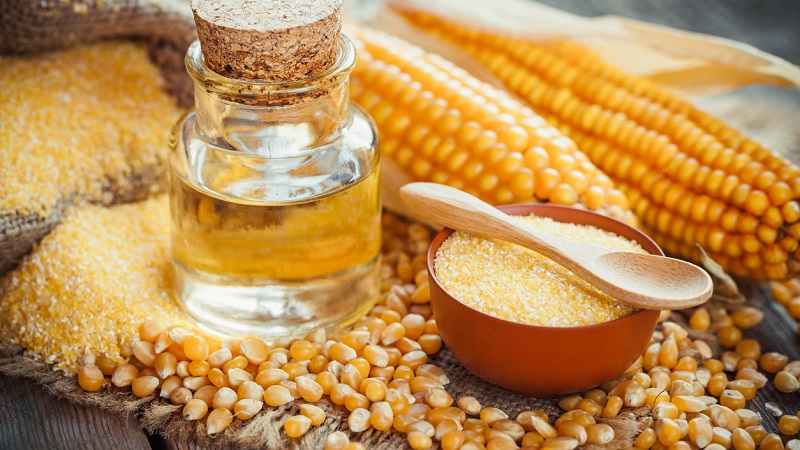
In traditional and folk medicine
Corn is a medicinal plant its grains, stigmas and leaves are used in medicine.
Grain properties:
- enhances immunity;
- removes toxins and toxins;
- lowers cholesterol;
- improves the condition of the teeth;
- prevents the development of diabetes, the occurrence of stroke, the occurrence of cardiovascular and oncological diseases;
- has a beneficial effect on the brain;
- improves visual acuity due to carotenoids contained in yellow grains of milk ripeness.
The plant is used as a dietary food with such diseases:
- hypertension and swelling;
- atherosclerosis;
- an ulcer of the gastrointestinal tract;
- diabetes.
Grains
The weevils contain a large number of components important for humans:
- minerals: potassium, calcium, magnesium, iron, phosphorus;
- essential amino acids: lysine and tryptophan;
- vitamins E, PP, C, A, group B;
- fatty oils (up to 5%).
The germ of a grain, which occupies almost a third of it, contains 35% fatty oils.
Stigma
Corn silk contains:
- vitamins K, C, B5;
- saponins (up to 3%);
- stigmasterol and sitosterol;
- tannins;
- fatty oils (2.5%);
- essential oil (0.12%).
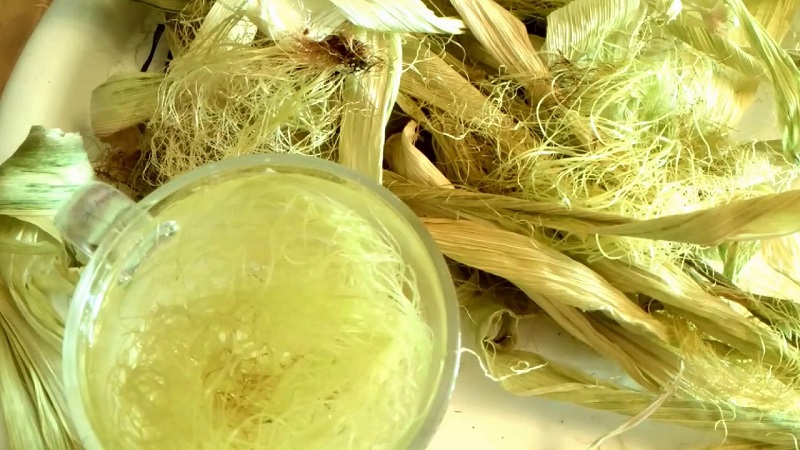
Extracts and tinctures from stigmas are used for:
- glaucoma;
- urolithiasis;
- inflammatory diseases of the genitourinary tract;
- inflammation of the bile ducts;
- cystitis;
- hepatitis;
- adenoma of the prostate.
Leaves
The leaves of the plant are rich:
- esters of phenolcarboxylic acids;
- flavonoids;
- quercetin;
- routine.
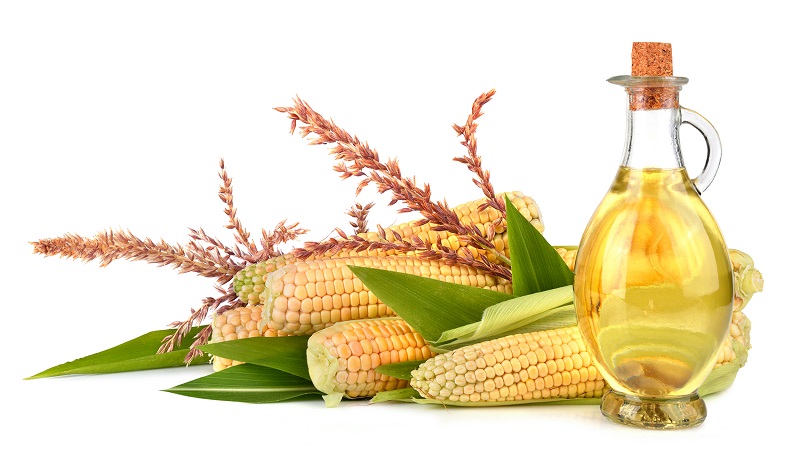
Oil
Oil is squeezed out of the embryos of ripe seeds and promotes:
- normalization of metabolism;
- improving the work of the biliary tract;
- prevention of vascular diseases;
- lowering and normalizing cholesterol levels;
- treatment of diabetes mellitus.
Contraindications
Both the cereal itself and any preparations from it contraindicated in people who have:
- high level of blood clotting;
- stomach ulcers, intestinal pathology;
- tendency to thrombophlebitis.
Grain and its products are high in calories and not very suitable. slimming... It is also important to use corn delicacies with caution - snacks, sticks, flakes, since during their production almost all useful substances are lost.
Other uses
Corn is used for the production of ethyl alcohol, which is added not only to alcohol, but also to fuel, solvents, disinfectants.
Cereal grown for silage, the stems are used to build huts and fences. Corks for vessels, bottles, smoking pipes are made of dry stalks.
Soft leaves enveloping the cobs are used when making balls by hand... Waste from corn is important for the production of paper, linoleum, fabrics, insulation materials.
Conclusion
Corn is both the basis of many dishes and a medicinal plant. The cereal is unpretentious: warm weather and bright sun are enough for its development. This is a waste-free plant: each of its parts - the ear, sprouts and others - is used either for food or as a material for the production of goods on an industrial scale or for individual use.